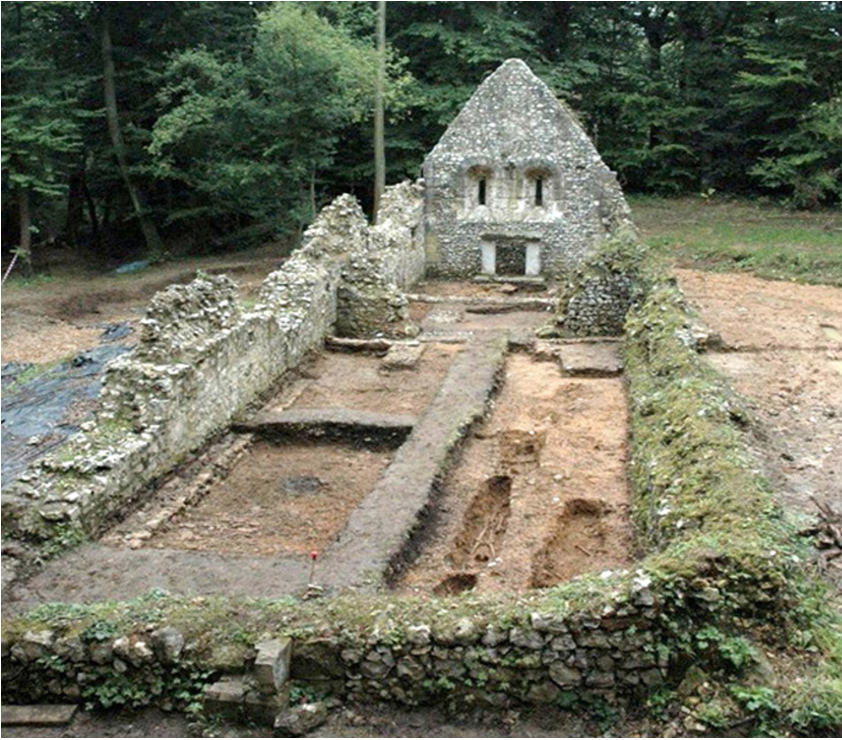Saint-Thomas d'Aizer
- Period: Medieval
- Location: France
- Burials: 200 individuals
- Archaeologists:J. Blondiaux, S. Naji, J. Bocquet-Appel, T. Colard, A. de Broucker, & C. de Seréville-Niel
- Related Keyword/Categories: Inhumation, Paleopathology

Blondiaux et al. (2015) examines the demographic structure of the leprosarium of Saint-Thomas d’Aizier, and compare it against other samples from similar sites. The Saint-Thomas collection includes 186 adults and 24 subadults, that were excavated as both individual burials and commingled remains (bone mixed together). They identified 70 males and 55 females, with the remaining individuals being indeterminate due to age or preservation. The comparative sample includes 1519 individuals from 8 medieval cemeteries where no leprosy was found. All nine of the sites under examination date from the Late Antique (450 AD) to Late Middle Ages (1300 AD), and were selected due to the extensive excavations of each site and overall good bone preservation. To compare differences in population structure between the general and leprosarium populations, two things need to be determined: 1) do they have leprosy? and 2) what age are they when they died? Based on comparison of the ages of populations with and without leprosy, they found some interesting patterns. Those populations without leprosy survived and lived longer than those with leprosy, but females in particular had increased mortality. Recent clinical studies of leprosy showed that people with this disease were more susceptible to tuberculosis and cancer, and this may explain the increased mortality. However, there is no evidence that tuberculosis was more common in the women of the Saint-Thomas d’Aizier leprosarium, and it seems to be endemic to this group. One possible reason for increased female mortality may have been due to more general female mortality caused by death during childbirth. One of the burials found at Saint-Thomas d’Aizier includes a young pregnant woman, the fetus still in utero, and may support the hypothesis that these women who were segregated from society for leprosy may have died younger due to a lack of support and proper care during pregnancy. Blondiaux et al. (2015) conclude that a possible cause for the decline in leprosy was due to infertility of those within the leprosaria. It is known that male fertility declines with leprosy, and if women were more likely to die during pregnancy, this would cause the population that was susceptible to the disease to decline over time. By comparing the ages of populations with and without leprosy, Blondiaux et al. (2015) are able to learn a little more about those effected by leprosy.
References: Blondiaux, J., Naji, S., Bocquet-Appel, J., Colard, T., de Broucker, A., & de Seréville-Niel, C. (2015). The leprosarium of Saint-Thomas d’Aizier: The cementochronological proof of the medieval decline of Hansen disease in Europe? International Journal of Paleopathology DOI: 10.1016/j.ijpp.2015.02.005


